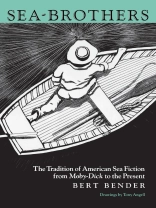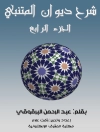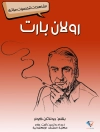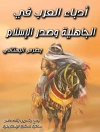Sea-Brothers offers the most extensive analysis to date of the sea and its meaning in American literature. On the basis of his study of Melville, Crane, London, Hemingway, Matthiessen, and ten lesser-known sea-writers, Bert Bender argues that the tradition of American sea fiction did not end with the opening of the western frontier and the replacement of sailing ships by steamers. Rather, he demonstrates its continuity and vitality, identifying a central vision within the tradition and showing how particular authors draw from, transform, and contribute to it.
What is most distinctive about American sea fiction, Bender contends, is its visionary, often mystical, response to the biological world and to man’s perceived place in the larger universe. When Melville envisioned the sea as the essential element of life, indeed as life itself, he changed the course of American sea fiction by introducing the relevance of biological thought. But his meditations on the whale and ‘the ungraspable phantom of life’ project a different reality from that envisioned by his successors. In American sea fiction after Melville, the influence of Origin of Species is as powerful as that of Moby Dick or the theme of sailing ships being displaced by steam.
The ideal of brotherhood so central to American sea fiction was severely compromised by the biological reality of a competitive, warring nature. Twentieth-century sea fiction has continued to center on the biological world and address the possibility of democratic brotherhood, but the issues were fundamentally changed by Darwin’s theories.
This book will be a valuable source for students and scholars of American literature and will interest readers of sea fiction.
Daftar Isi
Preface: The Sea, and the Blue Water of It
Acknowledgments
Note on Texts
Chapter 1. The Voyage in American Sea Fiction after the Pilgrim, the Acushnet, and the Beagle
Chapter 2. Meditation and the Life-Waters
Chapter 3. The Shipwrecked Soul
—’The Encantadas’: ‘Abased’ Sea Stories
—Israel Potter
—’Benito Cereno’
Chapter 4. The Jonah Feeling
—John Marr and Other Sailors
—Billy Budd, Sailor
Chapter 5. The Experience of Brotherhood in ‘The Open Boat’
Chapter 6. Jack London in the Tradition of American Sea Fiction
Chapter 7. From Sail to Steam: Sailor-Writers of the 1860s and 1870s
—Morgan Robertson
—Thornton Jenkins Hains
—James Brendan Connolly
—Arthur Mason
—Felix Riesenberg
—Bill Adams
Chapter 8. From Sail to Steam: Sailor-Writers of the 1880s and 1890s
—William Mc Fee
—Lincoln Ross Colcord
—Richard Matthews Hallet
—Archie Binns
Chapter 9. Hemingway: Coming to the Stream
Chapter 10. Hemingway’s Sea Men
—Harry Morgan
—Thomas Hudson and the Sea
—Santiago
Chapter 11. Peter Matthiessen and the Tradition in Modern Time
Chapter 12. Far Tortuga
Photographs
Notes
Bibliography
Chronology
Index
Tentang Penulis
Burt Bender is Associate Professor of English at Arizona State University and the author of various articles on nineteenth- and twentieth-century American literature. Tony Angell, a sculptor and painter, has illustrated Owls and Marine Birds and Mammals of Puget Sound.












